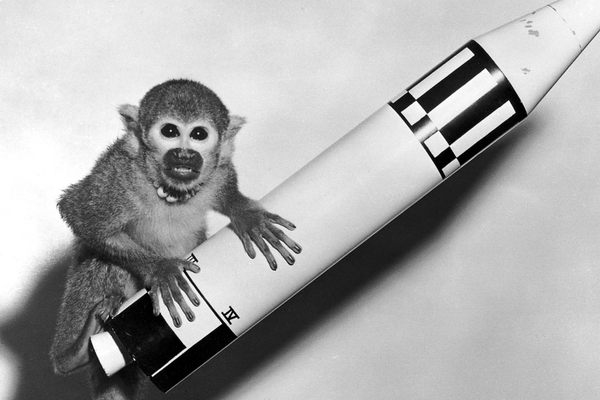7 Surprising Traditions to Celebrate the New Year
Welcome 2024 with a (lemon) pig or a polar bear (plunge).
How will you celebrate the new year? If you were in Sweden a century ago, you might have chosen a solo walk through a creepy, dark forest. In Chicago this year, you might go for a car rally/urban scavenger hunt (“Creative cheating” encouraged). From the medieval Feast of Fools to origins of “Auld Lang Syne,” here are some fresh ideas from the Atlas Obscura archives.
Do Americans Sing ‘Auld Lang Syne’ Because of a Frat Party?
by April White
Just before midnight on December 31, 1929, Guy Lombardo and his band played “Auld Lang Syne” in front of a crowd at the Roosevelt Hotel in Midtown Manhattan. It wasn’t yet a tradition, just an old Scottish folk song, played by a Canadian band in a New York hotel late one night at the end of a tumultuous year. So how did the song into the soundtrack for New Year’s Eve? It might have to do with a University of Virginia frat party and a cigar brand.

The New Year’s Feast That Transformed Fools Into Popes and Kings
by Sarah Laskow
The Feast of Fools, as described by the French theologians who condemned it in 1445, sounds like a ton of fun. This New Year’s Day celebration, they wrote, caught up high-ranking church officials in a bacchanal unworthy of their exalted positions. “Priests and clerks may be seen wearing masks and monstrous visages at the hours of office,” the theologians recounted, presumably with a sniff of horror. “They dance in the choir dressed as women, panders or minstrels. They sing wanton songs. They eat black puddings … while the celebrant is saying mass. They play at dice…. They run and leap through the church, without a blush at their own shame.” Sounds about right.
Lemon Pigs Are a New Year’s Trend—Again
by Anne Ewbank, Senior Associate Editor, Gastro Obscura
When Anna Pallai, author of 70s Dinner Party: The Good, the Bad and the Downright Ugly of Retro Food, posted the picture on Twitter, it was New Year’s Eve 2017. It was a snapshot from a 1971 book on entertaining that showed a goofy-looking pig statuette with an extremely confident caption: “For luck in the New Year, a Lemon Piglet is a must!” And her followers agreed that this oddly adorable idea was made for the social media age.

The New Year’s Ritual of Plunging Into Frigid Waters Started with a Strongman at Coney Island
by Mark Roberts
Starting the year with a screaming, slate-cleaning plunge into a cold body of water has become a tradition, with winter bathing clubs worldwide. The oldest such club in the United States is the Coney Island Polar Bear Club, founded in New York in 1903 by “physical culturist,” showman, publishing magnate, sensationalist, and daredevil Bernarr Macfadden. Its annual New Year’s swim, once attended only by club members and a few dozen outsiders, now attracts thousands of registered (and often costumed) bathers and curious onlookers.
To See What the Upcoming Year Holds, Take a Solo Walk in a Dark Forest
by Kelly Catalfamo
Picture a dark, silent forest on a winter’s night. Imagine being alone, without technology. You’ve spent all day in darkness, avoiding eating, drinking, or socializing, and told no one of your plans. Now it’s midnight, and the only things separating you from seeing your future are the woods and a handful of threatening creatures that want to lead you astray. That is, according to folklore, how some adventurous Swedes have spent the first moments of a new year.

Chicago’s Greatest New Year’s Day Tradition Is a Car Rally Scavenger Hunt
by Sarah Laskow
Started in 1955 by a group of sports cars enthusiasts, the Holiday Hangover Hassle is no ordinary race—in 1961, a magazine for car rally enthusiasts described it as “an event we can’t really call a rally.” The annual New Year’s Day event is better described as part scavenger hunt and part reunion, a madcap love letter to the Windy City and an excuse to spend a few hours exploring it.

































Follow us on Twitter to get the latest on the world's hidden wonders.
Like us on Facebook to get the latest on the world's hidden wonders.
Follow us on Twitter Like us on Facebook